en
On September 3, at Intersolar Mexico 2024 in Mexico City, Huasun Energy showcased its latest innovations, including zero-busbar (0BB) technology, Himalaya and Everest series HJT modules, and HJT-perovskite tandem cells. This presentation advanced the perception of photovoltaic technology in Latin America and marked a significant milestone for Huasun's heterojunction (HJT) advancements in the region.

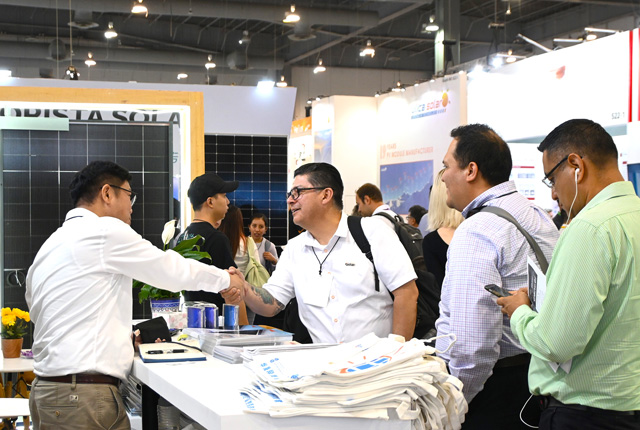
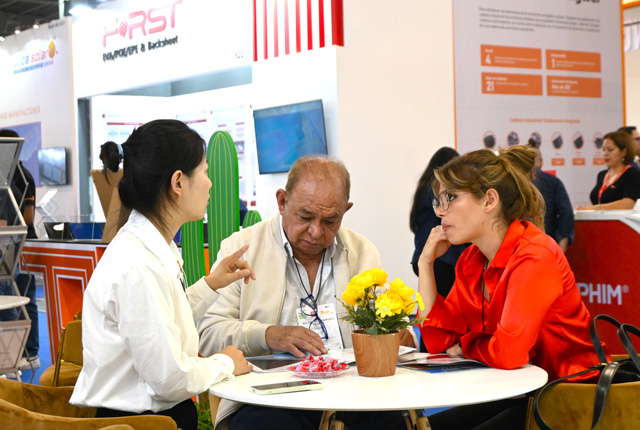

Mexico, situated in the southern part of North America, enjoys an average daily global horizontal irradiation (GHI) of about 5 kWh per square meter. This abundant sunlight and rich solar energy resources make it an ideal location for photovoltaic projects. By the end of 2023, Mexico's installed PV capacity had exceeded 10.8 GW, with a compound annual growth rate of 8.91%. Looking ahead, the country plans to further expand its solar energy sector, focusing most of its future projects in the sun-drenched northern desert regions.
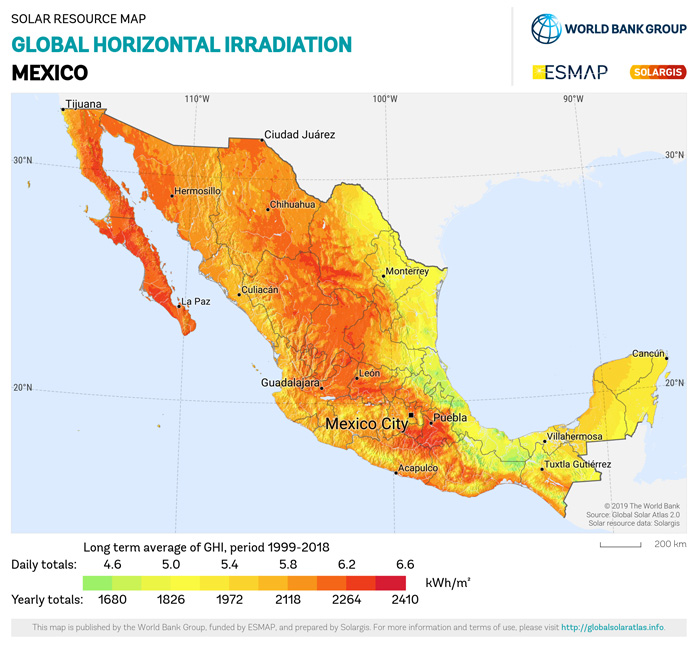
Source: Solargis
With its outstanding solar resources and rapid market growth, Mexico is now the second-largest PV market in Latin America and a key focus for Huasun's international expansion. However, the country's diverse terrain, including plateaus, mountains, and deserts, poses unique challenges. As the PV industry evolves, effectively utilizing solar energy, lowering costs, and improving system reliability in these varied landscapes remain critical challenges for the local market.
At the exhibition, local visitors had the chance to explore Huasun's HJT technology firsthand. The Himalaya G12-132 module, featuring an impressive power of 750.54W and a champion efficiency of 24.16%, has captured significant interest. Its exceptional performance and reliability align perfectly to Mexico's abundant solar resources, earning widespread praise and recognition from the audience.
Simultaneously, the innovative 0BB technology will enhance module performance, helping solar power projects achieve higher reliability, increased power generation, and reduced Balance of System (BOS) costs and Levelized Cost of Energy (LCOE). Visitors praised Huasun's products and technologies, noting their impressive innovation and performance, and expressed eagerness to explore closer cooperation with Huasun in the future.
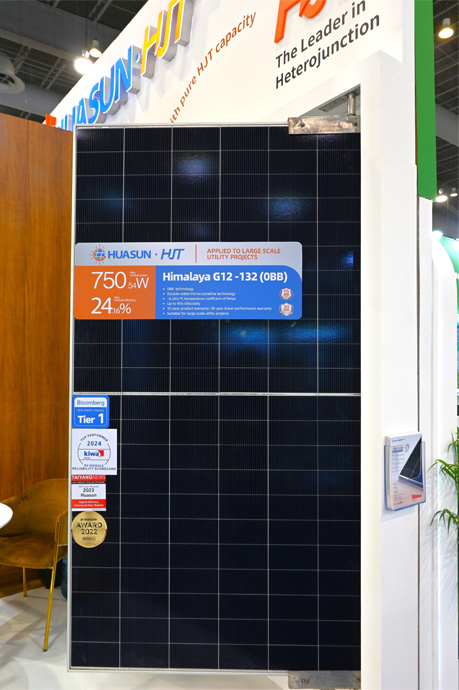
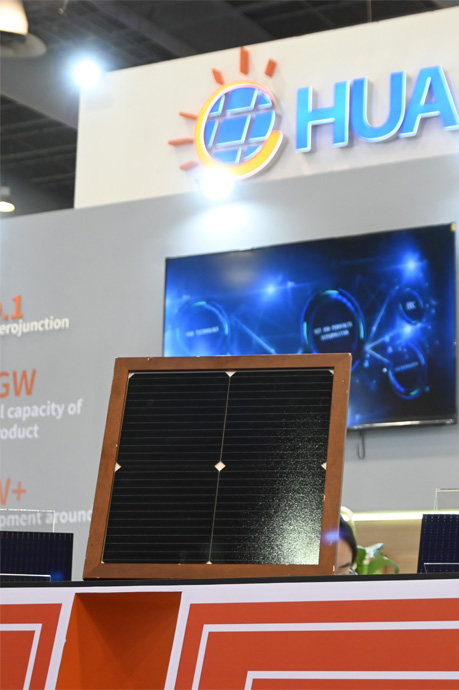
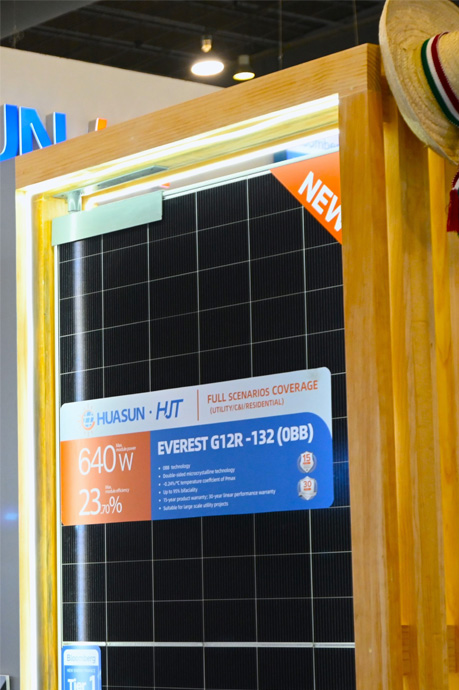
In response to the rapid growth of the PV market in Latin America, Huasun is strategically expanding its international presence. Leveraging its advanced heterojunction technology and comprehensive product portfolio, Huasun is partnering with local stakeholders to drive the accelerated development of the Mexican PV industry.
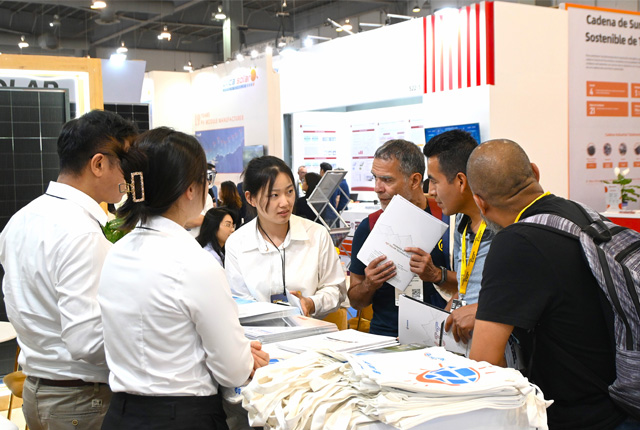

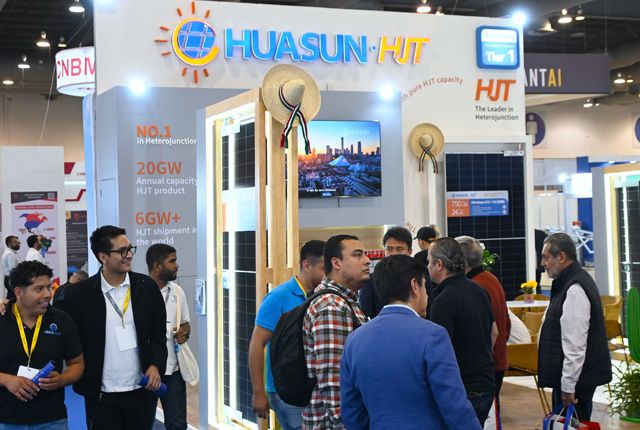
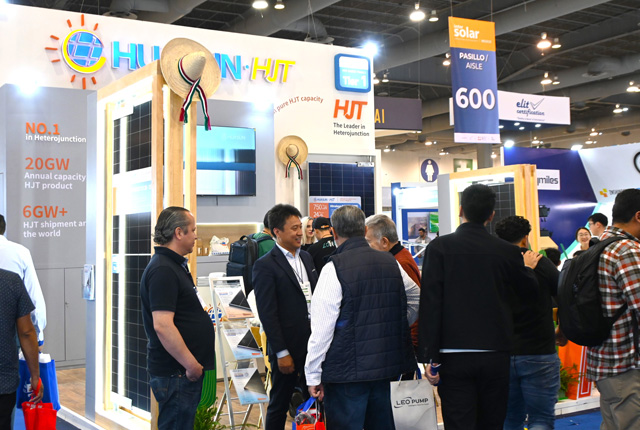
In highland mountainous terrains, Huasun has achieved a breakthrough with China’s largest mountainous HJT power station, set in the steep hills of Dali, Yunnan Province. Confronted with the dual challenges of variable climate and complex terrain, the Huasun Himalaya G12-132 modules—boasting exceptional bifaciality, higher output power, and superior conversion efficiency—have converted the rugged landscape into a highly productive PV station, paving the way for an ecologically harmonious future.
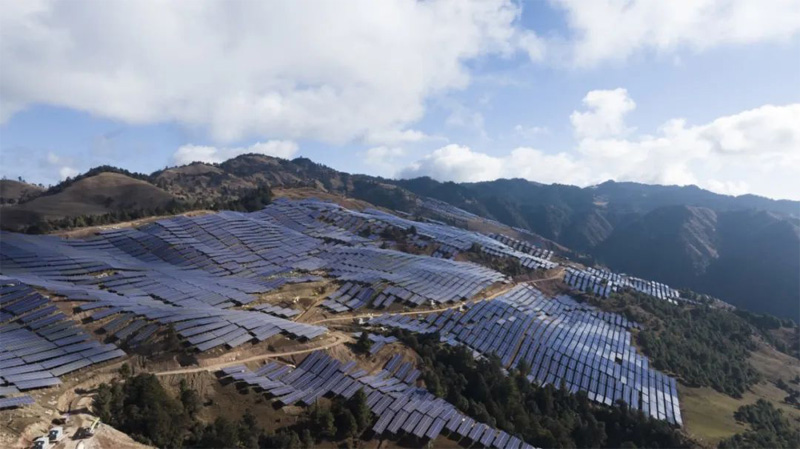
Dali, Yunnan, China
Amidst the vast sands, Huasun’s G12-132 modules excel thanks to their superior temperature coefficients and outstanding weak-light performance. These modules play a pivotal role in CGDG's ambitious 4 GW PV project in Ruoqiang, Xinjiang, China, effectively converting every ray of sunlight into a steady flow of green electricity. The project also incorporates multiple eco-friendly designs, including windbreaks, sand stabilization, heat balance regulation, and rainwater collection, achieving significant advancements in both ecological sustainability and economic growth.

Ruoqiang, Xinjiang, China (Photo Credit: cSCEc)
Looking ahead, Huasun will harness the full potential of HJT technology, deepen its commitment to the Latin American market, and drive technological innovation. By illuminating the Mexican desert landscape, Huasun aims to play a significant role in the transformation and advancement of the local photovoltaic industry.